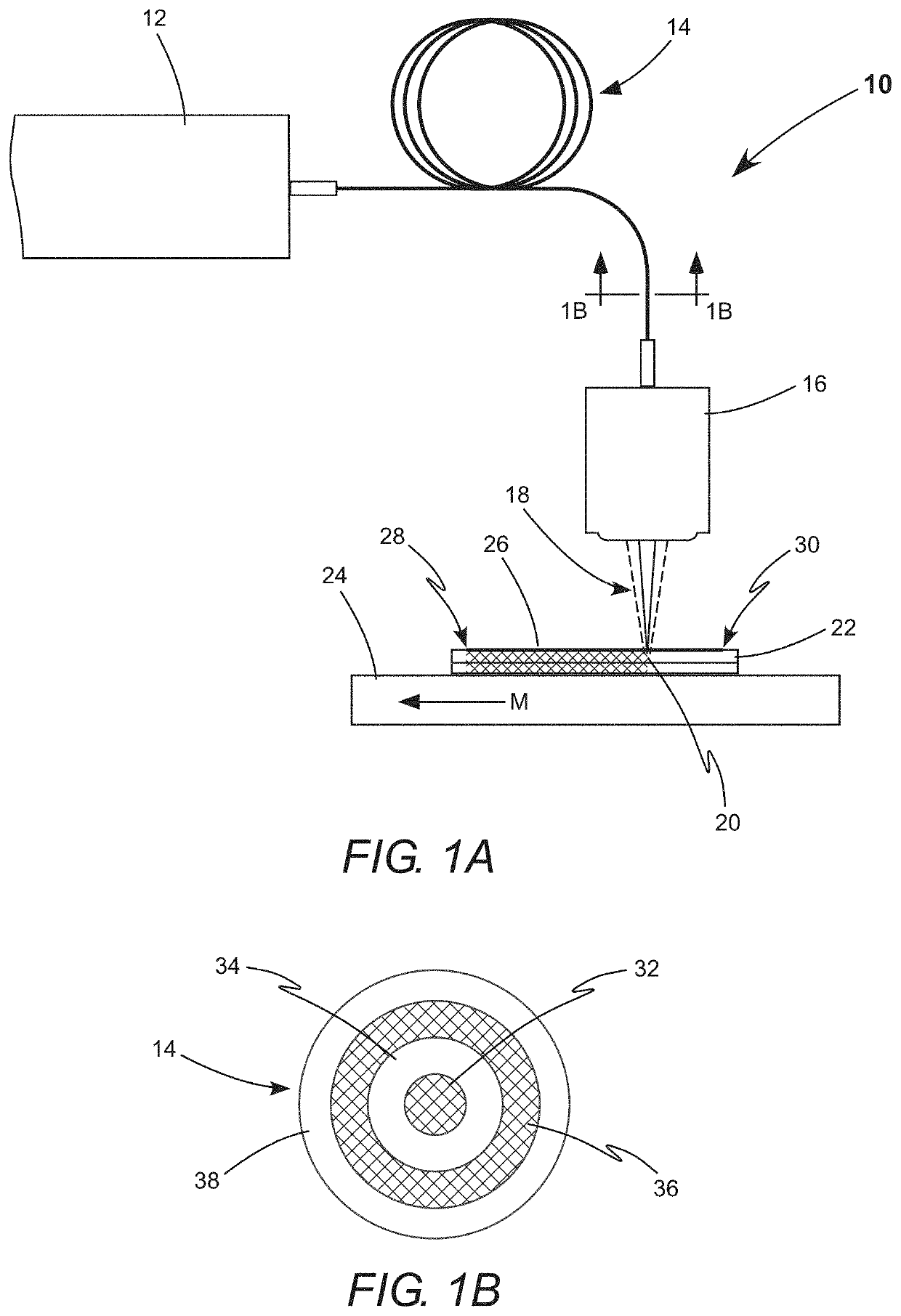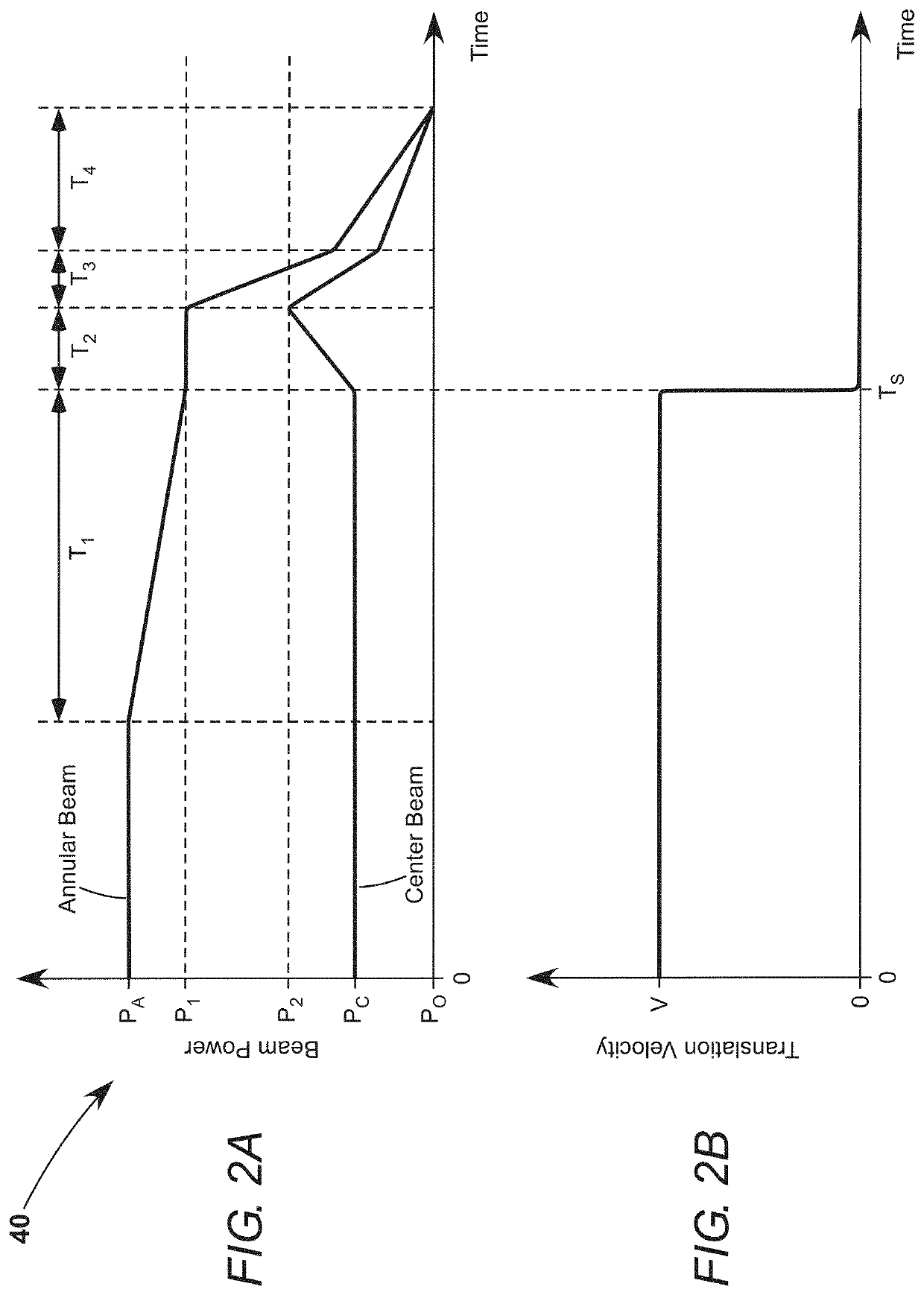Laser welding method
- Summary
- Abstract
- Description
- Claims
- Application Information
AI Technical Summary
Benefits of technology
Problems solved by technology
Method used
Image
Examples
Embodiment Construction
[0020]Referring now to the drawings, wherein like components are designated by like numerals, FIGS. 1A and 1B schematically illustrate an apparatus 10 used in prior-art laser processing methods and in the laser welding method of the present invention. A laser source 12 delivers at least two beams of laser radiation through an optical fiber 14 to a focusing lens 16. Optical fiber 14 includes a center core 32 for guiding a center beam of laser radiation. Center core 32 has a low refractive index cladding 34. Optical fiber 14 further includes an annular core 36 for guiding an annular beam of laser radiation. Annular core 36 is concentrically located between low refractive index cladding 34 and another low refractive index cladding 38. Laser source 12 is configured to deliver the center beam to center core 32 and the annular beam to annular core 36. Laser systems integrating such a laser source with such an optical fiber are commercially available. For example, the Highlight™ FL-ARM las...
PUM
| Property | Measurement | Unit |
|---|---|---|
| Power | aaaaa | aaaaa |
| Fraction | aaaaa | aaaaa |
| Fraction | aaaaa | aaaaa |
Abstract
Description
Claims
Application Information
 Login to View More
Login to View More - R&D
- Intellectual Property
- Life Sciences
- Materials
- Tech Scout
- Unparalleled Data Quality
- Higher Quality Content
- 60% Fewer Hallucinations
Browse by: Latest US Patents, China's latest patents, Technical Efficacy Thesaurus, Application Domain, Technology Topic, Popular Technical Reports.
© 2025 PatSnap. All rights reserved.Legal|Privacy policy|Modern Slavery Act Transparency Statement|Sitemap|About US| Contact US: help@patsnap.com



